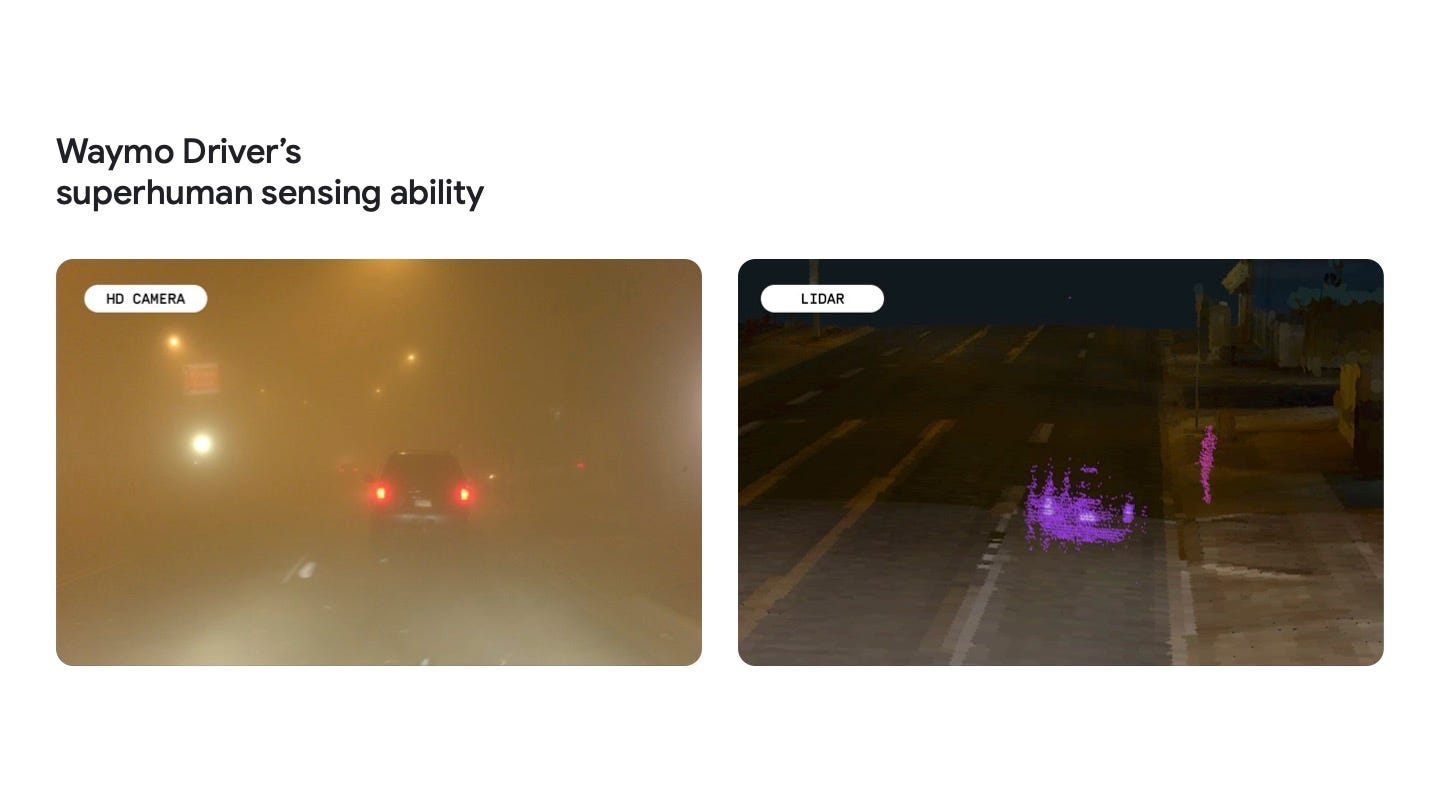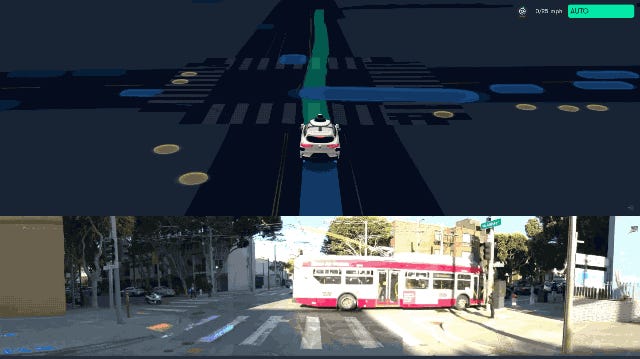
Courtesy Waymo
Waymo recently demonstrated why the company believes it’s necessary to have lidar and other sensors beyond cameras in order to deliver a safer robotaxi service.
During a presentation at Google I/O on Wednesday, co-CEO Dmitri Dolgov showed a few situations in which Waymo’s proprietary lidar and imaging radar system can detect pedestrians before cameras pick them up.
Waymo’s current fifth-generation autonomous car is equipped with five lidars, six radar sensors, and 29 cameras.
One scenario involved a Waymo driving through a dust storm in Phoenix, which can occur during Arizona’s monsoon season.

Courtesy Waymo
In one slide, Dolgov showed two frames of the same image — one of which was taken by Waymo’s “high-resolution, high dynamic range camera,” and the other from Waymo’s lidar.
The image on the right shows how Waymo’s lidar can detect the presence of a pedestrian better than the robotaxi’s camera. Dolgov called it the Waymo Driver’s “superhuman sensing ability.”
“You can much more clearly see there’s a pedestrian standing on the side of the road,” he said. “So imagine they were to step onto our path. This early detection can make a really big difference in how this situation plays out.”
Another scenario Waymo showed took place in San Francisco, one of the first cities in which the company made their robotaxis publicly available.

Courtesy Waymo
The video shown above demonstrated how Waymo’s imaging radar can detect a crossing pedestrian whose view from the robotaxi’s camera feed was blocked by a bus.
Because the imaging radar relies on radio waves to detect objects and people on the road, Waymo was able to detect the presence of a pedestrian before they showed up on the cameras. The yellow dot is the imaging radar’s radio waves detecting the activity of the object — in this case a human pedestrian.
The footage showed the Waymo stopping as the pedestrian walked into the middle of the road to cross the street.
The sensors “complement each other very nicely and give us redundancy,” Dolgov said at the presentation.
Waymo’s sensors are an identifiable feature on its white Jaguar robotaxis that now hum through the thoroughfares of several major US cities. The lidars, sensors, and cameras noticeably protrude off the vehicle’s exterior, including the lidar that sits on Waymo’s roof like a hat.
The company, including its cofounder Sebastian Thrun, as well as many industry experts, says lidar is essential for a safe self-driving experience.
Tesla is one of the leading voices going against this conventional wisdom. The company has used lidar for limited purposes, including data collection, but for scaling robotaxis, CEO Elon Musk has characterized lidar as an expensive “crutch.”
“The issue with Waymo’s cars is it costs Waymo money,” Musk said during Tesla’s Q1 earnings call in April.
Tesla is set to compete with Waymo in June when it is set to deploy 10 to 20 robotaxis in Austin. A spokesperson for Tesla did not respond to a request for comment.
Dolgov said at the Google I/O conference that sensors merely provide “raw, sometimes noisy measurements of the world around you.”
“It all comes down to our AI to interpret all of that data and make good driving decisions,” he said.
The post Waymo shows how radar and lidar help its robotaxis see what cameras can’t appeared first on Business Insider.



